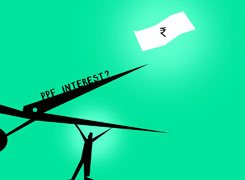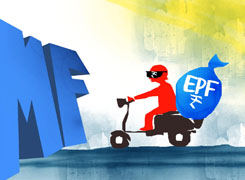IT Worker for 20 Years, 10 Companies, No 5-Year EPF Continuity - Tax Queries?
Nitin Narkhede |113 Answers |Ask -Follow
MF, PF Expert - Answered on Sep 24, 2024
As a mentor, Nitin has trained over 1,000 individuals, many of whom have seen remarkable financial transformations.
Nitin holds various certifications including the Association Of Mutual Funds in India (AMFI), the Insurance Regulatory and Development Authority and accreditations from several insurance and mutual fund aggregators.
He is a mechanical engineer from the J T Mahajan College, Jalgaon, with 34 years of experience of working with MNCs like Skoda Auto India, Volkswagen India and ThyssenKrupp Electrical Steel India.... more

Dear Sir, I am working in IT industry for past 20 years and have worked in multiple companies (10) and have not worked in any company for more than 4 years. I have EPF corpus for 25 lacs. so I am part of EPF for past 20 years but I dont have continuous EPF in any organization for 5 years. If I withdraw EPF will it be taxed at my income tax slab.
About Tax-Free EPF Withdrawal- According to EPF rules, if you have completed 5 years of continuous service (which includes service across multiple employers without withdrawing the balance between jobs), your EPF withdrawal is tax-free. So, despite changing jobs, your service duration with the EPF is counted collectively.
Since you've been contributing for 20 years without breaking the EPF continuity, your withdrawal will not be taxed. You can withdraw the EPF corpus of Rs 25 lakh without worrying about it being taxed at your income tax slab rate.
However, if at any point your EPF service was discontinued and restarted (without a transfer of funds between accounts), the period might reset, leading to taxation concerns. If you are unsure, you could consult with your EPF office or a tax advisor to confirm your exact status. Think about linking all the old accounts in to the current account so that your continuity of service can be verified by PF authorities. Now EPF office have started unified account and you linking your old accounts to the latest account will give you combined value and tax benefits. within my Prosperity Lifestyle Hub community we share such topics to get our financial challenges resolved.
Best regards,
Nitin Narkhede
Founder & MD, Prosperity Lifestyle Hub https://Nitinnarkhede.com
Free Webinar https://bit.ly/PLH-Webinar
You may like to see similar questions and answers below
Mihir Tanna |1090 Answers |Ask -Follow
Tax Expert - Answered on Feb 16, 2023
Ramalingam Kalirajan |10908 Answers |Ask -Follow
Mutual Funds, Financial Planning Expert - Answered on Jun 03, 2024
Ramalingam Kalirajan |10908 Answers |Ask -Follow
Mutual Funds, Financial Planning Expert - Answered on Jun 14, 2024
Milind Vadjikar | Answer |Ask -Follow
Insurance, Stocks, MF, PF Expert - Answered on Nov 26, 2024
Vipul Bhavsar | Answer |Ask -Follow
Tax Expert - Answered on Feb 14, 2025
Ramalingam Kalirajan |10908 Answers |Ask -Follow
Mutual Funds, Financial Planning Expert - Answered on Dec 20, 2025
Ramalingam Kalirajan |10908 Answers |Ask -Follow
Mutual Funds, Financial Planning Expert - Answered on Dec 20, 2025
Naveenn Kummar |237 Answers |Ask -Follow
Financial Planner, MF, Insurance Expert - Answered on Dec 20, 2025
Ramalingam Kalirajan |10908 Answers |Ask -Follow
Mutual Funds, Financial Planning Expert - Answered on Dec 19, 2025
Nayagam P P |10859 Answers |Ask -Follow
Career Counsellor - Answered on Dec 19, 2025
Ramalingam Kalirajan |10908 Answers |Ask -Follow
Mutual Funds, Financial Planning Expert - Answered on Dec 19, 2025
Ramalingam Kalirajan |10908 Answers |Ask -Follow
Mutual Funds, Financial Planning Expert - Answered on Dec 19, 2025
Ramalingam Kalirajan |10908 Answers |Ask -Follow
Mutual Funds, Financial Planning Expert - Answered on Dec 19, 2025
Radheshyam Zanwar |6751 Answers |Ask -Follow
MHT-CET, IIT-JEE, NEET-UG Expert - Answered on Dec 19, 2025
Radheshyam Zanwar |6751 Answers |Ask -Follow
MHT-CET, IIT-JEE, NEET-UG Expert - Answered on Dec 19, 2025



























